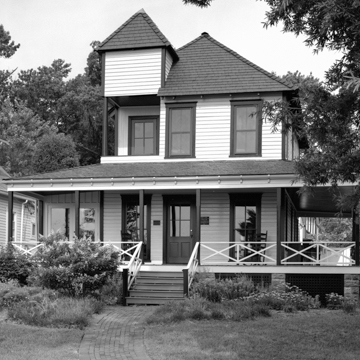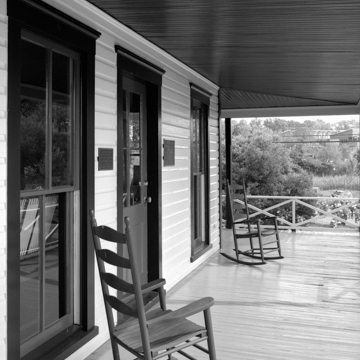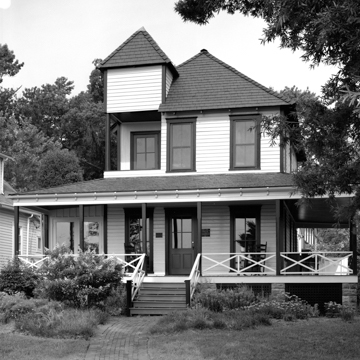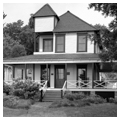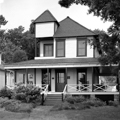Civil War veteran Charles Douglass, son of the famed abolitionist Frederick Douglass, established the resort town of Highland Beach in 1893, with his father’s financial backing. Tradition has it that the younger Douglass was motivated to establish this African American vacation enclave five miles south of Annapolis after he and his wife were turned away from the adjacent resort community of Bay Ridge. In 1893 he purchased forty-four acres, including five hundred feet of Chesapeake Bay beachfront, and laid out streets.
The first two cottages built were for father and son. While Charles’s house was demolished in the 1950s, the two-and-a-half-story dwelling with a wraparound porch built for Frederick Douglass remains in excellent condition. Some accounts maintain that he designed the house himself, including a second-floor balcony with views toward his birthplace on the Eastern Shore. However, the elder Douglass died in 1895 in his home in Washington before living at this summer house.
Approximately ten more cottages were built in Highland Beach by 1910, including a large nine-bedroom house for George T. Bowen, a wealthy Baltimore caterer who was formerly enslaved. The Douglass and Bowen families welcomed guests, and Highland Beach became a popular destination for those in the close-knit ranks of educated Black professionals. Famous visitors included educator Booker T. Washington, singer and actor Paul Robeson, and poet Langston Hughes. Around thirty more cottages were built between 1910 and 1930, many by distinguished Black residents of Washington such as poet Paul Laurence Dunbar and Robert and Mary Church Terrell.
After Charles Douglass’s death in 1921, the remaining lots were passed to his sons Haley and Joseph, with Haley Douglass emerging as a long-serving community leader. In 1922 Highland Beach became the first incorporated African American town in Maryland, and only the second incorporated town in Anne Arundel County after Annapolis. The Douglass family remained fixtures in the community, which gradually became a year-round residential neighborhood, and continued to own the house until 1986.
References
Ware, Donna, “Douglass Summer House,” Anne Arundel County, Maryland. National Register of Historic Places Registration Form, 1992. National Park Service, U.S. Department of the Interior, Washington, D.C.









